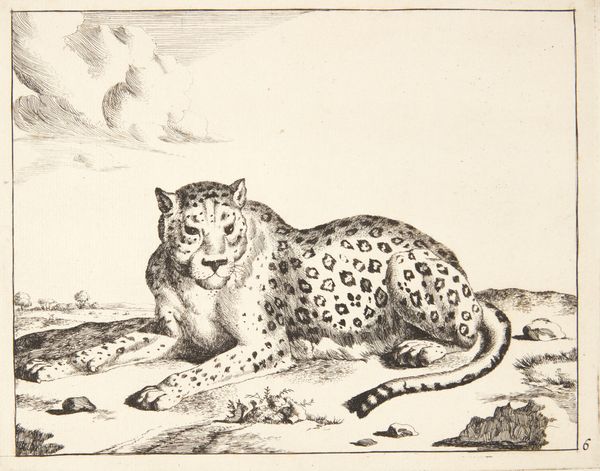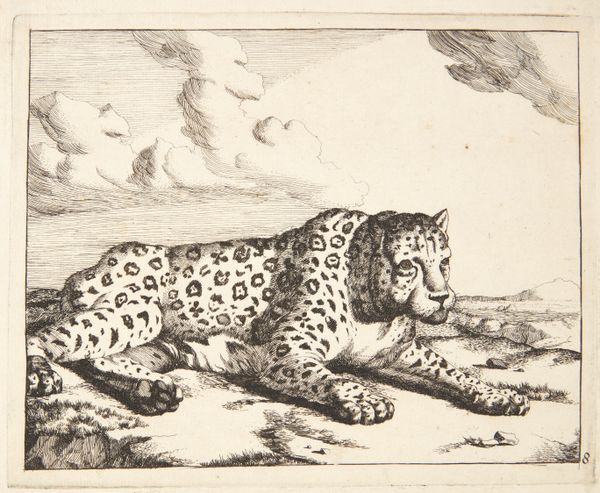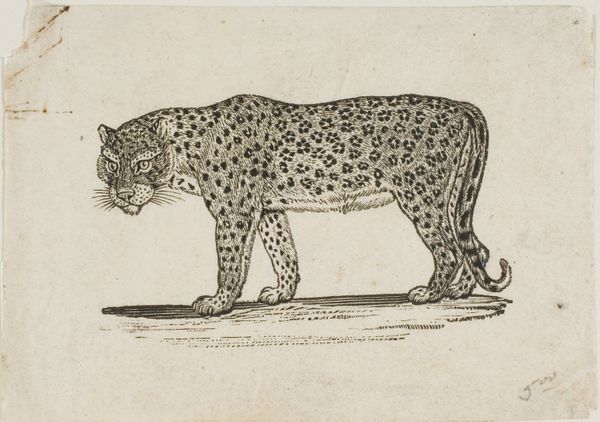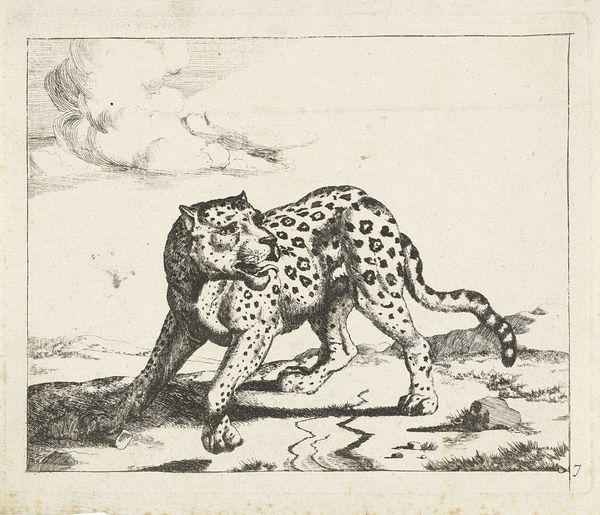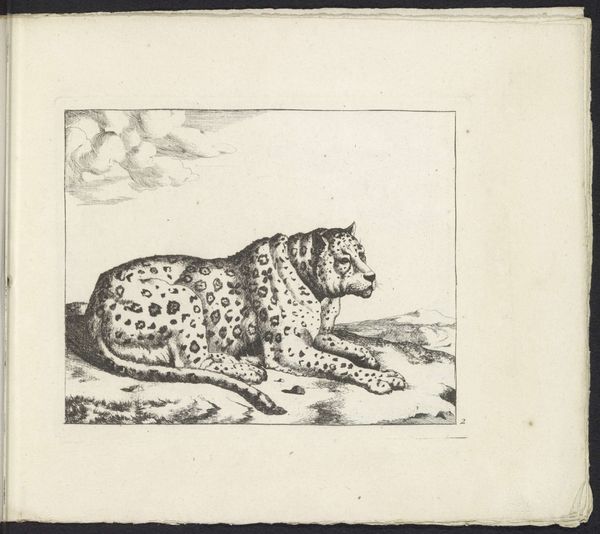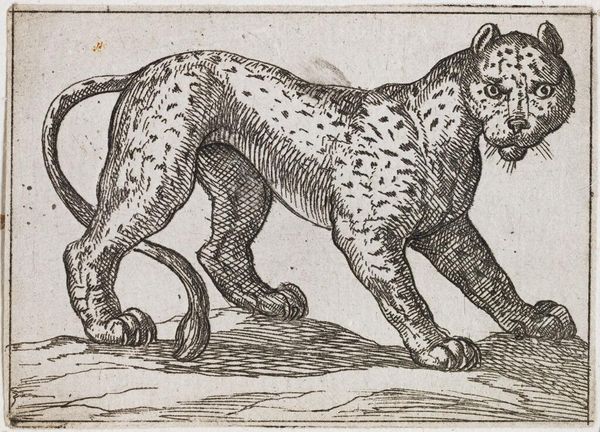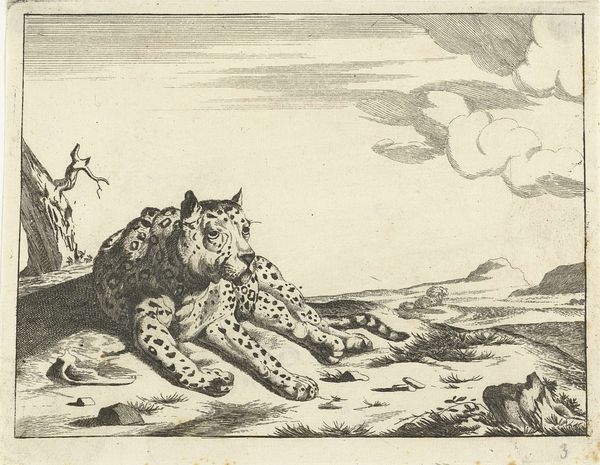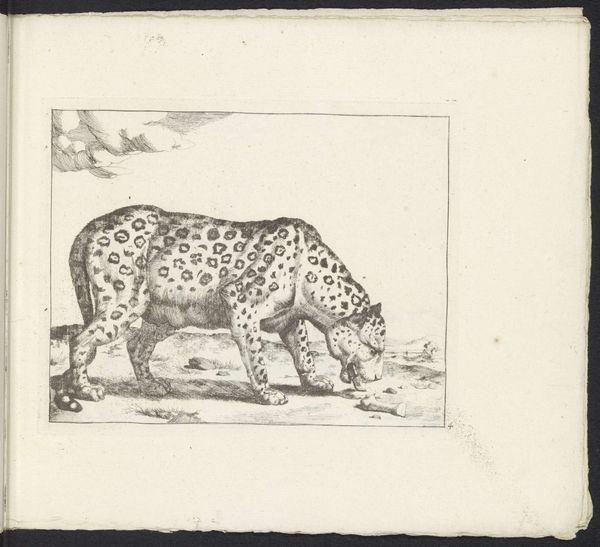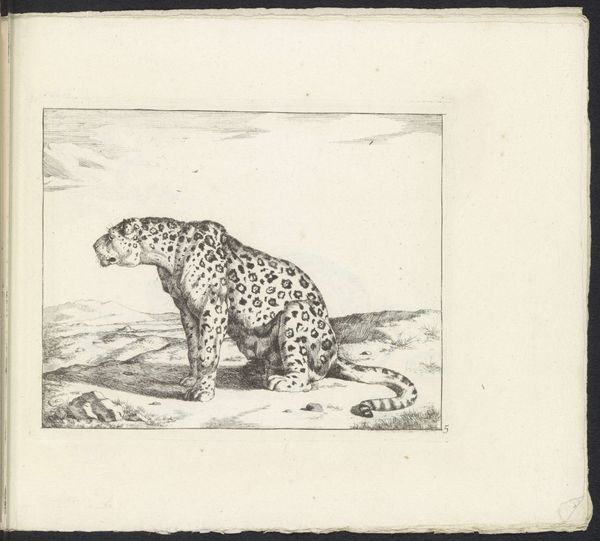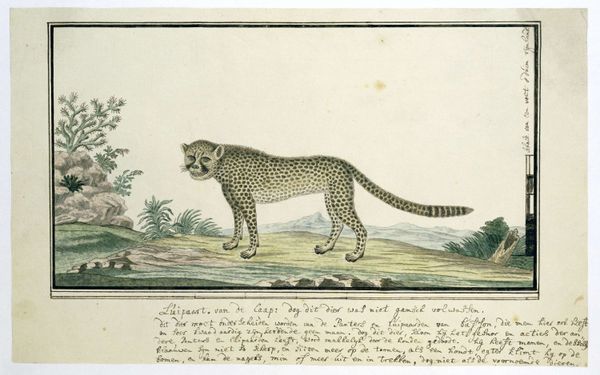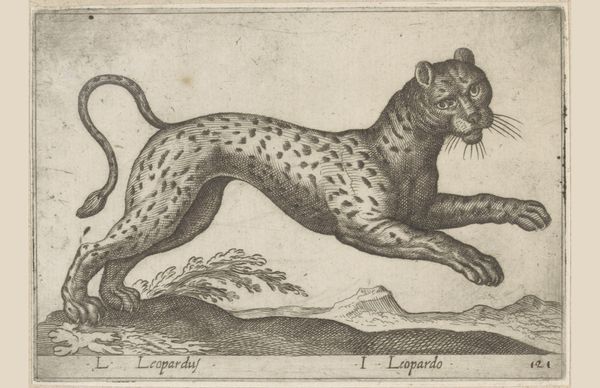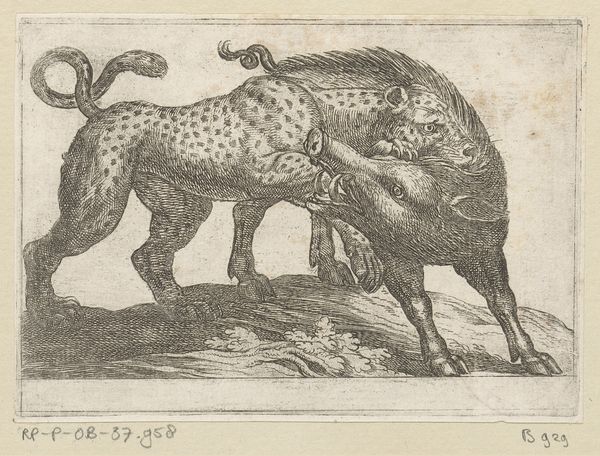
drawing, print, etching
#
drawing
#
ink drawing
#
baroque
#
animal
# print
#
etching
#
landscape
#
figuration
#
line
Dimensions: 140 mm (height) x 174 mm (width) (plademaal)
Curator: Marcus de Bye, a Dutch artist active in the mid-17th century, created this etching around 1638-1690. It's titled "Liggende leopard, vendt mod højre"—"Reclining Leopard, Facing Right." Editor: Immediately, the thing that strikes me is its poised stillness, even boredom. It's less a predator, more like a slightly grumpy housecat that's been disturbed. Curator: Fascinating observation. These animal studies were frequently incorporated into larger landscape compositions or emblem books. De Bye, himself, specialized in topographical views and this piece reveals the increasing public fascination with exotic animals. Zoological gardens were becoming quite fashionable. Editor: Right, the symbol itself then carries meaning. The leopard—strength, ferocity. But here, subdued. Almost domesticated. Is that a comment on colonial power, taming the wild, the other? Or does it have some spiritual context, perhaps symbolizing watchfulness, courage in a heraldic context? Curator: Undoubtedly there are layers of political subtext at play, intentionally or otherwise. Prints such as these served multiple functions in society. Beyond art objects for wealthy collectors, they became educational tools for understanding global ecosystems during a time when overseas trade and colonization began influencing cultural imagination in new ways. These images fueled scientific progress and colonialism, for that matter. Editor: The posture lends itself to my theory about colonial symbolism: it's not in its natural environment, but staged; made passive; shown to be possessed. This may very well say more about 17th-century European anxieties, their sense of superiority than about a "real" animal in its true habitat. The lines feel precise, like a scientific rendering, and in this particular medium, prints helped to circulate particular views globally. Curator: Absolutely. Think about who was commissioning, collecting, disseminating. This lends credence to your astute colonial reading. Furthermore, we're observing an increased desire to categorize and control nature for an expanding worldview. Editor: So this beautiful etching serves as more than a pretty image; it shows that this particular representation, with all the meanings and histories embedded, played a role in solidifying ideas of domination. Thanks, I can never look at the big cats at the zoo the same way now. Curator: Precisely. I hope this helps our visitors consider not only what’s depicted in art, but how social conditions determine art’s function.
Comments
No comments
Be the first to comment and join the conversation on the ultimate creative platform.
